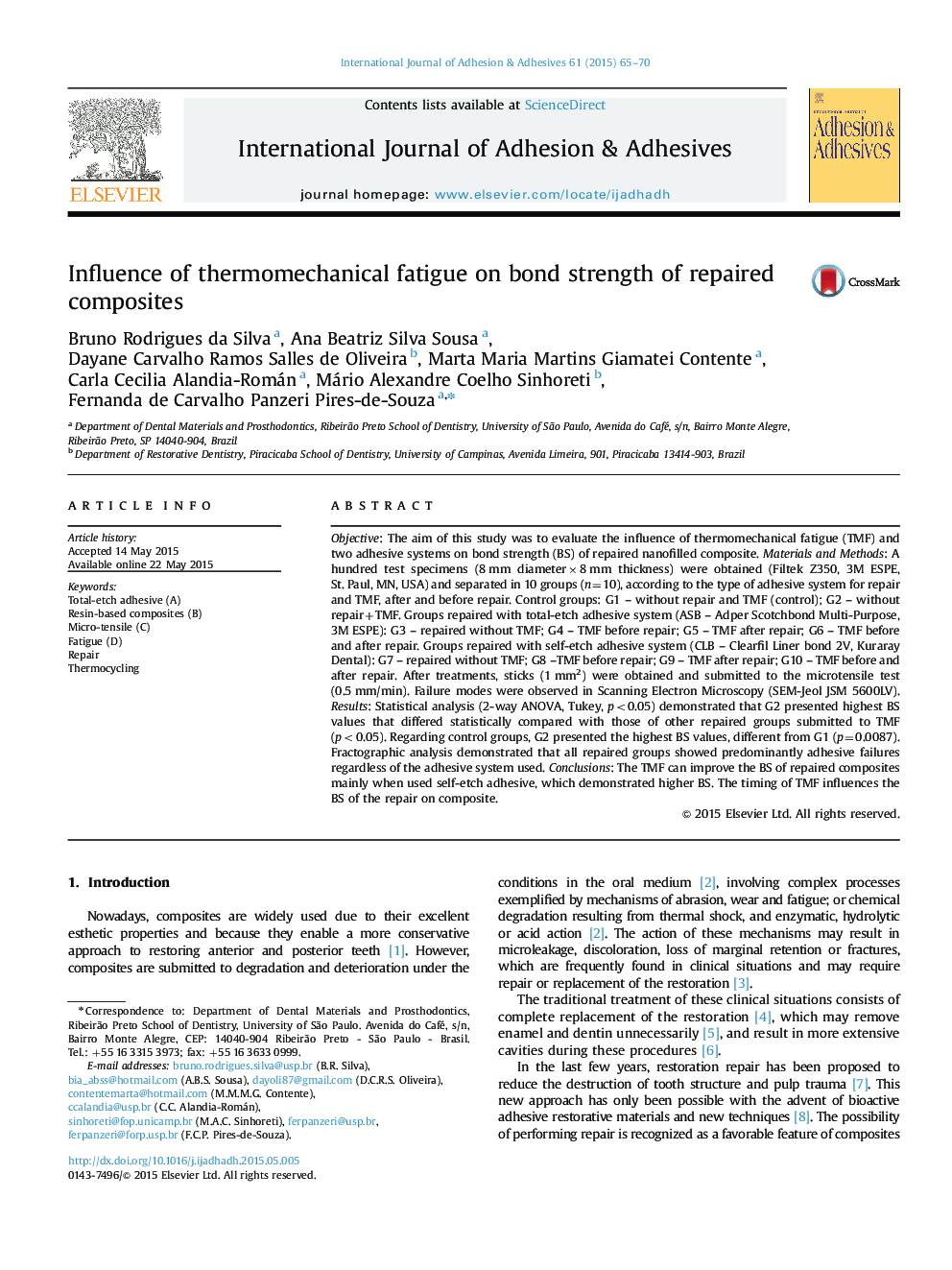| Article ID | Journal | Published Year | Pages | File Type |
|---|---|---|---|---|
| 779879 | International Journal of Adhesion and Adhesives | 2015 | 6 Pages |
Objective: The aim of this study was to evaluate the influence of thermomechanical fatigue (TMF) and two adhesive systems on bond strength (BS) of repaired nanofilled composite. Materials and Methods: A hundred test specimens (8 mm diameter×8 mm thickness) were obtained (Filtek Z350, 3M ESPE, St. Paul, MN, USA) and separated in 10 groups (n=10), according to the type of adhesive system for repair and TMF, after and before repair. Control groups: G1 – without repair and TMF (control); G2 – without repair+TMF. Groups repaired with total-etch adhesive system (ASB – Adper Scotchbond Multi-Purpose, 3M ESPE): G3 – repaired without TMF; G4 – TMF before repair; G5 – TMF after repair; G6 – TMF before and after repair. Groups repaired with self-etch adhesive system (CLB – Clearfil Liner bond 2V, Kuraray Dental): G7 – repaired without TMF; G8 –TMF before repair; G9 – TMF after repair; G10 – TMF before and after repair. After treatments, sticks (1 mm2) were obtained and submitted to the microtensile test (0.5 mm/min). Failure modes were observed in Scanning Electron Microscopy (SEM-Jeol JSM 5600LV). Results: Statistical analysis (2-way ANOVA, Tukey, p<0.05) demonstrated that G2 presented highest BS values that differed statistically compared with those of other repaired groups submitted to TMF (p<0.05). Regarding control groups, G2 presented the highest BS values, different from G1 (p=0.0087). Fractographic analysis demonstrated that all repaired groups showed predominantly adhesive failures regardless of the adhesive system used. Conclusions: The TMF can improve the BS of repaired composites mainly when used self-etch adhesive, which demonstrated higher BS. The timing of TMF influences the BS of the repair on composite.
